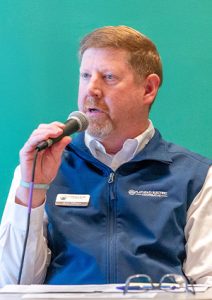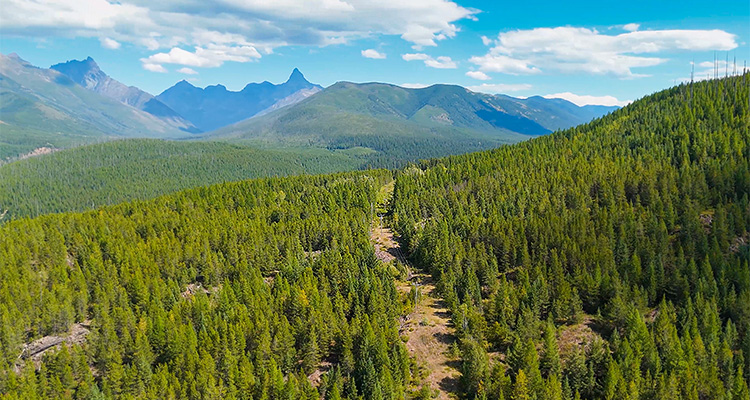Flathead Electric Cooperative is bringing a new era of clean energy to the state of Montana
As a public utility owned by the members it serves, Flathead Electric Cooperative (FEC) provides electricity to residential, commercial, and industrial customers in northwest and south-central Montana. Now the largest cooperative in Montana, FEC is a member of Pacific Northwest Generating Cooperative (PNGC), a generation and transmission (G&T) cooperative comprised of 25 electric distribution cooperatives operating in seven Western states.

Formed in 1937, FEC was established by a group of neighbors in Northwest Montana and started to provide electric service to 117 farm homes in 1938. FEC’s COO, Jason Williams, joins us to elaborate on the cooperative’s evolution. “FEC originally operated as a typical cooperative serving the rural communities surrounding the municipalities in Flathead County,” Jason opens. “However, in 1998, FEC purchased the Montana facilities of the investor-owned utility, PacifiCorp, and essentially doubled its size overnight. Today, FEC provides electric service to over 77,000 meters and is the second largest electric utility in Montana.
“Over the course of my 21-year career at FEC, our power supply has gone from 100-percent Bonneville Power Administration (BPA) provided to approximately 97.5 percent BPA provided. BPA is a federal power agency that markets the energy generated by the hydro dams and one nuclear facility that comprises the Federal Columbia River Power System. BPA owns and operates around 75 percent of the transmission lines in the Pacific Northwest, including all the transmission lines and the power generated by two dams in our service territory of Northwest Montana.
“Of the 97.5 percent power supplied by BPA, about 90 percent is considered carbon free, and the other 2.5 percent is from carbon-free resources we have either built or are contracted to purchase power from. We have two community solar projects, two small hydro projects, a landfill gas-to-energy project that burns methane, and a biomass fueled project with a local lumber company. We’re also nearing completion of our third community solar project, which will be complete with a battery to dispatch during high demand.
“We currently rely on BPA to provide transmission capacity to serve our growing energy needs, but we’re starting to push the limits in terms of availability as we’re using our full allotment of the hydro system,” Jason explains. “We’re currently contracted to purchase power from a wind farm and a solar installation, but as we continue to grow, we’re exploring other potential baseload generating facilities to diversify from BPA.”
As wildfires are increasing in commonality, FEC has a robust mitigation strategy. “Our approach revolves around vegetation management practices and the use of technology,” Jason states. “We have approximately 1600 miles of overhead lines in state and federal forests, as well as on private land, and we’re currently using a company called Overstory to help assess our highest risk areas using satellite imagery. This imagery provides information on proximity to our lines and tree health, and it can even look outside our right-of-way to identify trees that present a hazard of falling into our lines. We are working on a ten-year trimming cycle and are actively removing as many hazard trees each year as we have available resources. 
“From a technology perspective, we are installing solid dielectric equipment to replace old oil-filled reclosers. These devices can change operational settings, meaning that during potential wildfire conditions they can be programmed to operate before our expulsion fuses would.
“The wildfire mitigation legislation that was passed this year in the Montana Legislature was a heavy lift but extremely rewarding to get across the finish line,” he reflects. “The legislation was developed by our statewide organization, the Montana Electric Cooperative Association (MECA), in partnership with the investor-owned utilities that operate in Montana. I think it is a win-win for the utilities and the people of Montana, as it requires all electric facilities providers to prepare a wildfire mitigation plan with certain requirements. The legislation protects electric facilities providers who are substantially complying with their wildfire mitigation plan from strict liability in the case of a wildfire.”
As our conversation continues, Jason turns his attention to how FEC will evolve in 2026 and beyond. “Fall is usually one of our busiest times as people try to get their new construction projects energized before the cold temps of winter,” he shares. “Our crews are also preparing to wrap up our own capital improvement projects and instead focus on maintenance during the winter months, as well as budgeting and planning for 2026.
“We’re also in the middle of a five-year capital investment project to upgrade part of our sub-transmission voltage from 35kV to 69kV, as well as upgrading capacity at several substations. This project includes replacing four power transformers with larger units and adding three more power transformers at new or existing substations.
“Our ultimate mission is to provide reliable and affordable electricity to our members,” Jason concludes. “Over the next five years, I’d like us to be operating under a new BPA contract and potentially be part of developing new baseload generation. On a wider scale, I’d also like to see a new transmission line built to deliver generation to our growing loads. Around 25 percent of our employees will be eligible for retirement over the next five years, so our people will inevitably change, but I’m confident that new employees will bring new energy to fuel our great cooperative forward.”
